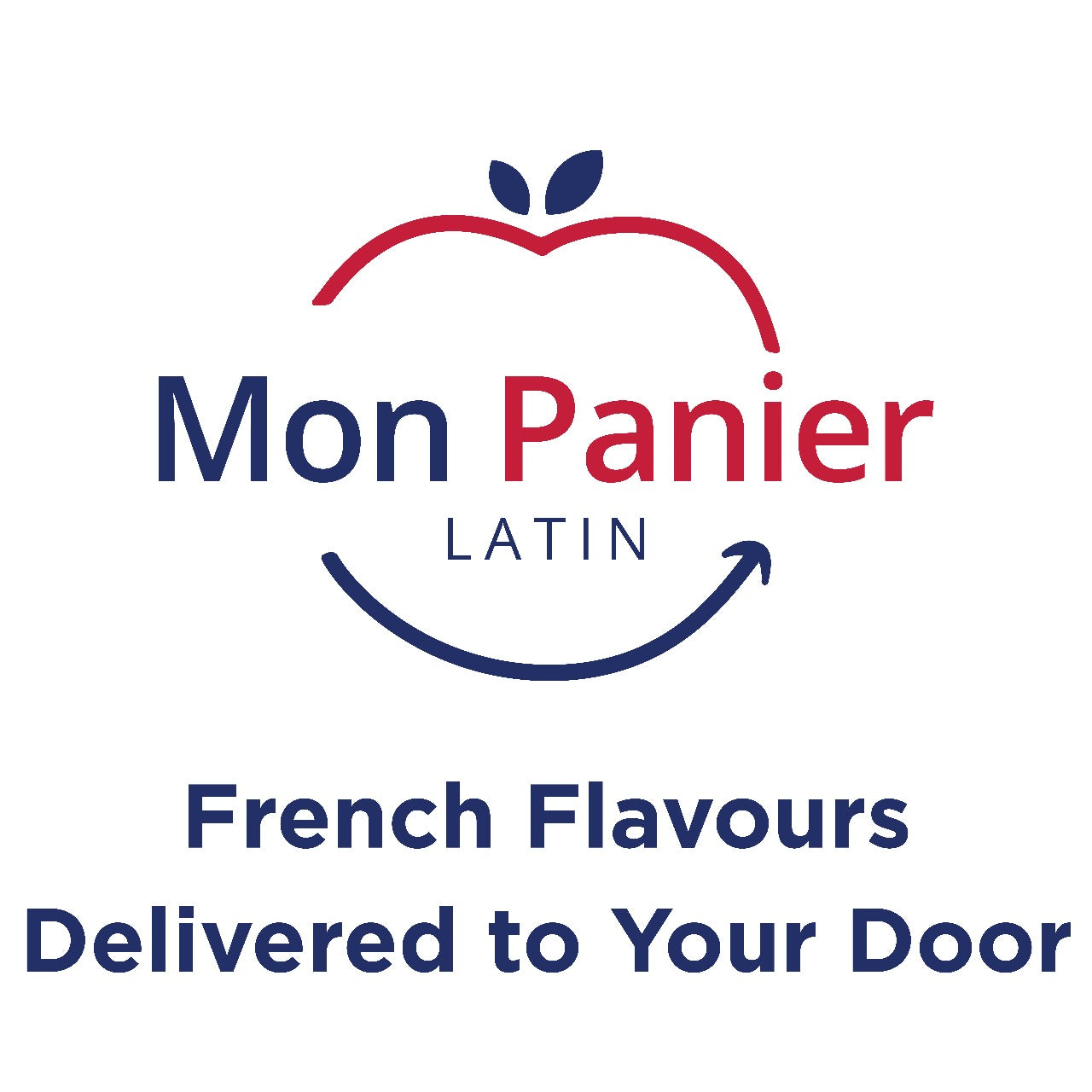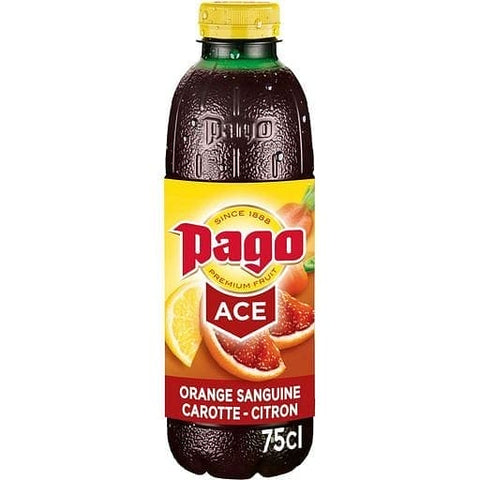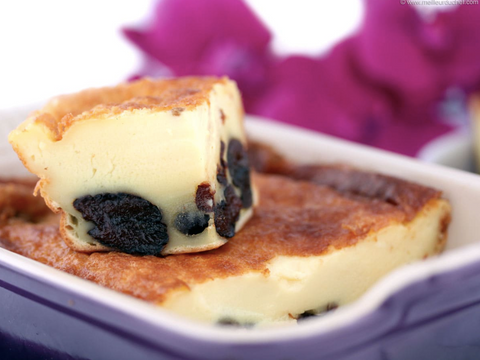French Mont Blanc and Marrons Glaces are two types of mountains in the French Alps. Both are named after Mont Blanc, the highest mountain in Western Europe. The French Alps are home to several ski resorts, including one more than 13,000 feet above sea level called La Plagne, or The Snow. In 2003, a popular patisserie opened in this resort town to serve the local skiers and snowboarders. This was the thoughtfully named Patisserie la Plagne.
The name translates to "snow-covered mountain." The patisserie serves ice cream made with 150 different ingredients sourced from around France, including some imported from Italy and Switzerland.
A specialty is a custard-based ice cream known as "Marrons Glaces" (literally: "Brown Ice Cream"). These are flavored with pistachio nuts. The dessert was so popular that it was featured on the cover of Gourmet magazine in 2002. The patisserie's owner at the time decided to name his creation after the nearby mountain range to give them even more promotional value.
The French Mont Blanc is a type of coffee-laced ice cream. It was invented in 1718 by a Swiss confectioner named Michel Ladurie, who called it café au lait glacé because the mixture of coffee and milk was reminiscent of café au lait (coffee with milk). The ice cream was originally made in a typical way — a custard base was covered with whipped cream, and then frozen. However, this method results in soft and unappetizing ice cream.
A French Mont Blanc consists of an egg custard base served with fruit purée, flavored with coffee and flavorings. The name "French" comes from the fact that the original recipe used ingredients from France; these days many other countries have their versions of the dessert.
In France, several specialty stores sell French Mont Blancs. Some of these stores also serve Marrons Glaces (literally translated as "chestnuts glace" or sometimes "chestnut ice cream"). These are made with chestnut purée and alcohol-based flavoring rather than being flavored with coffee.
Why Mont Blanc is called Mont Blanc?
Mont Blanc is the highest mountain in Europe, standing at a height of 4,810 meters (15,781 feet). Although it is not visible from Geneva except as a faint outline on the horizon, it dominates the city’s skyline. The name Mont Blanc means “White Mountain” and it was given to this beautiful peak by early French explorers. The name Mont Blanc is a shortened version of what used to be called Mont Maudit. This means “Cursed Mountain” because it was considered to be deadly and dangerous.
A few centuries later someone decided that the mountain was less cursed than majestic and beautiful and so renamed it Mont Blanc.
Taste of Mont Blanc
A "Mont Blanc" is a dessert made with puréed sweetened chestnuts. It is often used as the base for ice creams and cakes. Mont Blanc is the highest mountain in Europe and one of the most famous mountains in the world. The name means "white mountain", so you might be wondering what a Mont Blanc tastes like. It's a little bit like caramel, with a nutty flavor. It's also sweet, but not too much so, as it contains very little sugar.
The Mont Blanc is a sweet and decadent dessert with a creamy filling. The chestnut flavor of the cream comes through strongly and reminds me of the chestnut tree in my aunt's yard growing up. There are also strong hints of vanilla, which makes sense since it is part of the pastry cream recipe. The fact that the pastry cream is made ahead of time makes this dessert easier to assemble than you might think. All in all, it's a simple but delicious dessert that would be great for any holiday party or potluck!
What are French Marrons?
French Marrons are the chestnuts from the south of France. Chestnuts are not nuts, they are a fruit, although they look like nuts. The French marron is thicker and sweeter. It has a light brown color. Even in its natural state, it's very sweet. The French marron is so popular and so famous that it's called "The Queen of Chestnuts". It is grown in the South of France, in the mountains near Marseille.
The chestnut tree has been present since ancient times in many countries including China, India, and North Africa. The Romans then brought them to Europe with them everywhere they went. They grew in Italy and Spain before arriving in France when Francis I brought them from Italy at the beginning of the sixteenth century to Fontainebleau where he planted five hectares (about 12 acres).
Why is marron glacé so expensive?
Marron glacé has become a luxury item, as they are time-consuming to make, involve a lot of waste in the making, and their preparation has been made more complex by European food regulations.
- To make marron glacé, you need high-quality chestnuts (especially in terms of taste), which means that you cannot buy them in bulk like potatoes. For example, in Italy, the best chestnuts come from the region of Piedmont, but there are not enough chestnuts to supply both the Italian market and that of other countries. So if you want to buy Italian chestnuts outside of Italy, they will be expensive. Then you need to peel the chestnuts and boil them for 1h30 with syrup (water and sugar). This involves a lot of work because peeling chestnuts is delicate and time-consuming. Moreover, each piece needs to be peeled individually because only one level of the shell needs to be removed: it would be impossible to peel an entire chestnut with a single peel.

Difference between Marrons and Chataignes
Marrons are a chestnut that has been cooked. The marron is the fruit of the sweet chestnut tree (Castanea sativa). It grows in green spiky shells from September to November. The fruit is covered by a prickly husk, which is sometimes removed before cooking. In France, they are often roasted and sold in paper cones at street stalls during autumn. They are also available vacuum-packed in tins and jars.
To make marrons glacés, the chestnuts are boiled in water for around 15 minutes and then peeled. The peeled marrons are cooked in syrup made with sugar, water, and glucose for a further 20 minutes. They are then left to dry for 10 days before being dipped in syrup again and left to dry for a further five days. The candied marrons are then packed into tins or glass jars but need to be eaten within two months.
Chataignes (chestnuts) grow wild on trees throughout France and can be bought fresh from September onwards, usually in their prickly shells. Some people roast them on an open fire but it’s important not to let them burn as they can blacken easily due to their high sugar content.
What is marron paste?
Marron paste is a kind of sweet paste, which contains chestnut as its main ingredient. Marron paste is usually used to make cake or sweets. The taste and the texture of marron paste are different from the canned chestnut because canned chestnut contains too much water. The taste and texture are not so good. It’s better to use fresh chestnut.
Marron paste is a confectionery made from chestnuts that are used in many desserts and pastries, including Mont Blanc. Chestnuts are boiled and then ground into a fine paste, which can then be used for piping or as a filling for cakes, cookies, or choux pastry. Marron paste is often flavored with rum or orange blossom water.
What does marron glace taste like?
Marron glacés are candied chestnuts. They are chestnuts that have been peeled and boiled in a sugar syrup until very soft, and then they are boiled again in the same syrup. The result is a sweet, clear sugary coating on the nut. The flavor is similar to a candied yam or candied sweet potato, but with a richer, deeper taste than either of those two. Marron glaces are often used to make desserts or tarts, but I prefer eating them out of hand.
I've never had them any way other than as dessert food; I'm sure there must be savory uses for them, but I don't know what they might be.
What can I use instead of marron glace?
Marron Glace is a specialty product and can be hard to find. A good substitute is any dried fruit, like apricots or dates. If you can't find candied chestnuts (a.k.a. marron glace), here are some ideas:
- Dried (or fresh) fruit like cranberries, raisins, cherries, blueberries, apricots, dates, etc.
- Coconut flakes
- Nuts like pecans, walnuts, almonds, hazelnuts
Are marrons glaces vegan?
Since candied chestnuts are made from chestnuts that have been cooked and peeled, they're technically considered "processed" food. However, there are no animal products in marrons glaces per se; they're made with sugar, water, and glucose syrup.
Marrons glaces aren't vegan because they aren't considered raw or natural. For a food to be considered vegan, it must be unprocessed and free of animal products. It's not clear exactly why marrons glaces aren't vegan — the Vegan Society simply says that "chestnuts cooked in syrup" are "generally unsuitable for vegans.
- Vegan marrons glaces, often called vegan candied chestnuts, are a Christmas tradition for many people. To be honest, I never knew why because I have always been vegetarian, but it turns out that the traditional recipe for marrons glaces relies heavily on non-vegan ingredients — like eggs and honey.
- These vegan marrons glaces are made with no animal products whatsoever, so they're perfect for those of you who are vegan or allergic to eggs and honey. They're also great for those of us who love dessert but want to avoid sugar spikes and crashes. The recipe is based on an old family recipe that my grandmother used to make when she was a little girl in France. I've made some modifications over the years to make them more suitable for a post-paleo lifestyle with less sugar and no flour.
The filling is mostly made of roasted sweet potatoes, which makes them extra delicious (and healthy!). I've used coconut sugar instead of white sugar in this recipe because it has a lower glycemic index than white sugar and it tastes great too! I've also added some maple syrup to help bind
How do you store marron glace?
The best way to store marron glace is at room temperature. You can also keep them in the refrigerator, but they are likely to develop condensation and lose a bit of their luster. Although it's not ideal, you can freeze marrons glace, but let them defrost thoroughly before serving.
Marron glace can lose moisture if not stored properly. As soon as you bring them home, take them out of the packaging and place them in an airtight container or zip lock bag. They will last one to two months if kept at room temperature.
If you want to store them for longer periods, they can be frozen. Place the marron glaces in a zip lock bag and places it in the freezer. Remove as many air pockets as possible before placing them in the freezer. They will last up to three months when frozen.
To retain their shape, the marrons must be stored flat
- Place them in a single layer on a tray covered with parchment paper and refrigerate for up to 10 days.
- To avoid browning and drying out, cover with a second sheet of parchment paper, then place another tray or board on top of the marrons before refrigerating. Alternatively, wrap the glace individually with plastic wrap.
So when are you trying these French Mont Blanc and Marrons Glaces




